Don't wanna be here? Send us removal request.
Text
1. Please introduce your chosen subject area. What interests you as potential starting points or areas of research? What influenced this choice?
While putting this blog together, I noticed that the theme that came up time and time again was craft. As a 3D designer, I think craft and its surrounding history is incredibly important to understand and appreciate. It is the root of the modern processes we use today and can help us understand them. I think it will be interesting to research crafts’ history and unpick certain techniques and their relevance in the world today. For example, what crafts are the most popular and why, how have craft techniques evolved over time and how have their uses and contexts changed? Can traditional techniques be utilised or adapted to improve the sustainability of modern production methods?
I am also very interested in how craft differs around the world, especially historically when populations were more localised. I think it is fascinating to see how different cultures take the same material, process or function and create something incredibly specific to that place. For example, how historic weavers in China could use silk from silkworms, whereas places like the UK were more dependent on sheep for wool for their textiles. Craft frequently depends on traditions that arise from a multitude of factors like historical context, location and cultural practices, all of which I would love to explore. In addition to this I can look at how the perception of craft changes based on location and unpack the preconceptions and stereotypes that surround it.
The topic of craft interests me as, generally speaking, it is more sustainable than mass manufacturing. I think this is why many designers are turning to craft in order to reduce their impact on the planet- crafting an object takes a lot of time and skill, which forces the designer to think before they make. I think this is why many will choose better quality and more sustainable materials to work with. Furthermore, the slow nature of craft results in fewer batches being created so waste is minimised. Craft is also a practical way to learn about history and the world around us. Many crafts have brought communities together or forged stories that have been passed from generation to generation, alongside skills and knowledge. The social and sustainable aspects of craft have attracted many people to take them up. In recent years, and especially over lockdown, many have taken up accessible crafts like knitting and crochet. These techniques in particular are popular as they don’t require much equipment and are affordable. This trend is incredibly positive; it has introduced many young people to traditional techniques and encourages them to think about their relationship with sustainable production.
5 notes
·
View notes
Text
2. Please contextually reference your subject matter. What art, design, cultural, historic references can you look at to gain insight? Describe them and why they are relevant.
Leading on from my previous point, someone that has encouraged community surrounding craft (in this case knitting) is Danish knitwear designer Learke Bagger. In lockdown she released a free jumper pattern on instagram to unite the knitters of social media. The project attracted the attention of beginners and experts alike and placed a focus on using up whatever scrap yarn you have at home, using simple, beginner-friendly techniques. The project has many parallels with the ‘make do and mend’ mentality during WW2 where many people who had never sewn or knitted picked up new skills to repair and make when clothes were rationed. It's interesting to see how things once done out of necessity are becoming normalised as we are increasingly mindful of our waste production.
Chinese Ge Ba textiles were also created with the aim to reduce waste. These textiles were produced in the mid 20th century from scraps of fabric saved from old clothes, furnishings and offcuts. The scraps were then layered and adhered together with rice glue to create a thick material, often used to line the soles of shoes. Today, the textiles are popular among folk art collectors for their unique designs and compositions- the layering of fabric created beautiful collages. I think these textiles are fascinating as they are unique to China. Although it is upsetting to think of how they are a product of necessity, they prove that no scrap is too small to waste and that unique new materials can be fashioned from overlooked sources.
Bosnian artist, Maja Bajevic, celebrated traditional Bosnian craft through her piece: Women at Work, Under Construction. This 5 day sight specific performance piece was produced at the National Museum in Bosnia and Herzegovina which was being repaired after being damaged in the Yugoslavian wars. Bajevic employed five Bosnian women refugees to embroider traditional folklore patterns onto the protective net surrounding the scaffolding. I love this piece for many reasons, one being how she chooses champion craft, more specifically embroidery, which has not always been recognised in the art and design world. Especially in history, craft techniques were not valued as highly as fine art, despite the incredible efforts of talented craftspeople. The piece also highlights the resilience of the tradition of craft- even in the face of war, the knowledge and practice of craft will prevail.
Another reference that inspires me is the Campana brothers’ Transplastic chairs. These chairs are an amalgam of the cheap plastic garden chair and beautifully organically woven wicker. These pieces make me think about the loss of craft in the everyday and how we could begin to implement it more into the modern day. Craft can be used to repair man-made products and even improve them, much like the Japanese art of kintsugi.
0 notes
Text
3. How does this subject area relate to the bigger picture of your own area of expertise? Have you explored similar concepts before? Talk about a project (s) you have done in specialism that is relevant either conceptually or technically. Which mediums, techniques, materials that you have mastered on the course so far could you utilise in your FMP?
In A Wild Exchange we explored the topic of craft as a whole. The project taught me a lot about craft, specifically in Surrey and the Watts Gallery where the project was centered. Throughout the project we investigated the site and its history of craft. Our group looked at how craft is inherently linked with the natural world and heritage. We created a cross-shaped structure with 4 corners to seat three people (to represent the generations), the last section is positioned around a tree. We wanted to reference Mary Watt’s Scottish heritage so we created the screens by weaving strips of bamboo, to recreate the look of an Orkney chair. These chairs woven from straw were a key reference for us, we were interested in how they were made for their insulative properties from humble materials. The weaving process was incredibly slow and required much preparation for the bamboo to bend, however I found the process incredibly rewarding and loved the final outcome. I really enjoyed the whole of this project, from research to making and would love to investigate other areas of the world and their relationship with craft.
I also used weaving in my Waste Not project, where I reconstructed old climbing ropes into a chalk bag. Once again, the process was time consuming, but I was very pleased with the fabric I created. Weaving, and other textile processes, will definitely become a focus of my final major project as I have the most experience and interest in them over other craft processes. The sustainability aspect of this project is also something I hope to incorporate in my FMP, especially considering how the textile industry is one of the most polluting.
0 notes
Text
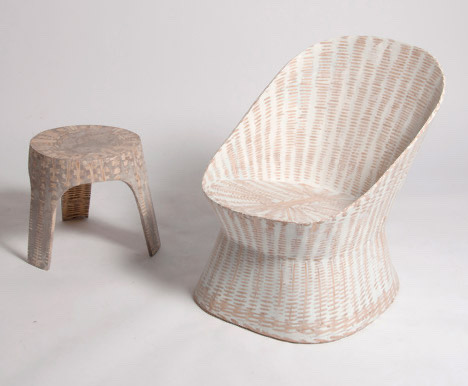
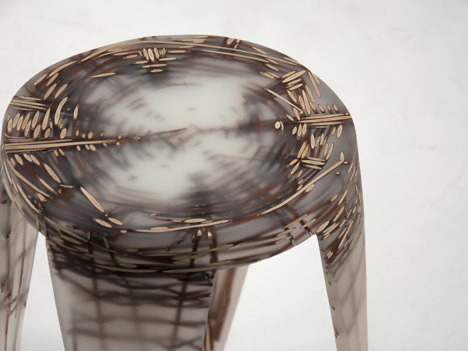

Landscape Within, 2014
Wiktoria Szaweil
Polish designer, Wiktoria Szaweil wanted to “capture the beauty and the spirituality of an eastern landscape within a physical object, I tried to translate different aspects of landscape into materials, colours, techniques and shapes."
I like how she uses modern materials in conjunction with ancient techniques to preserve the hand crafted object.
0 notes
Text

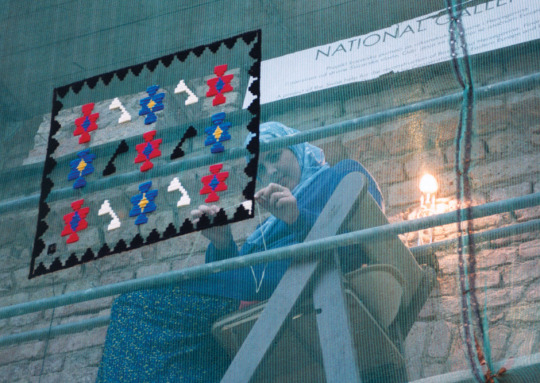
Women at Work- Under Construction, 1999
Maja Bajevic
‘She worked for five days on the performance piece with five Bosnian women refugees. They embroidered traditional folklore patterns on the protective net outside the National Museum in Bosnia and Herzegovina, which was being repaired after being damaged in the Yugoslavian wars. The work builds on a form of restoration; it was a way for the artist to recreate her city after the wounds caused by the conflicts. It also highlights crafts, a creative art that has not always been recognised by museums.’
0 notes
Text

Needlepoint Lace, 1920
Sophie Tauber-Arp
Sophie Tauber-Arp’s work spreads over almost every discipline, although one of my favourite pieces of hers is this needlepoint lace. Lacemaking by hand is a dying craft, very few have the expertise. I love how she clearly had the dedication to not only learn the craft, but also put her own spin on it by creating block shapes and sharp lines- a far cry from the cliche florals of most lace.
1 note
·
View note
Text
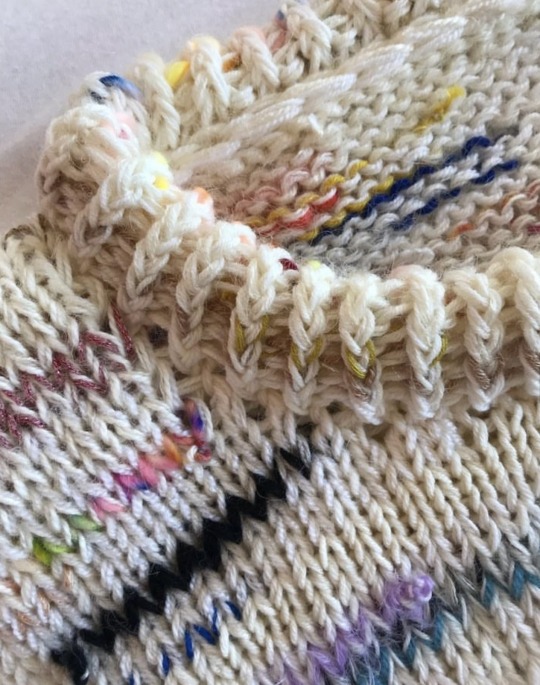
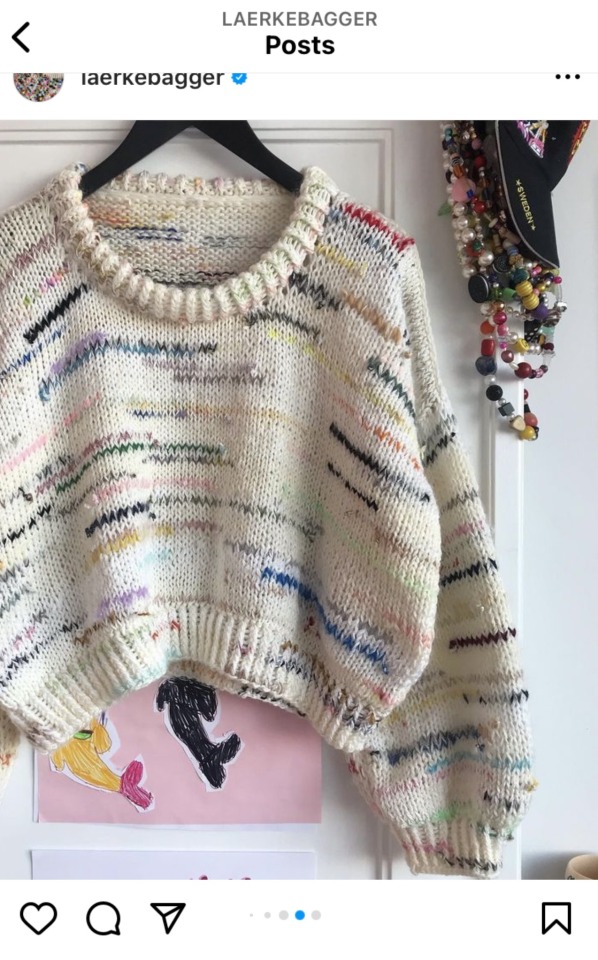
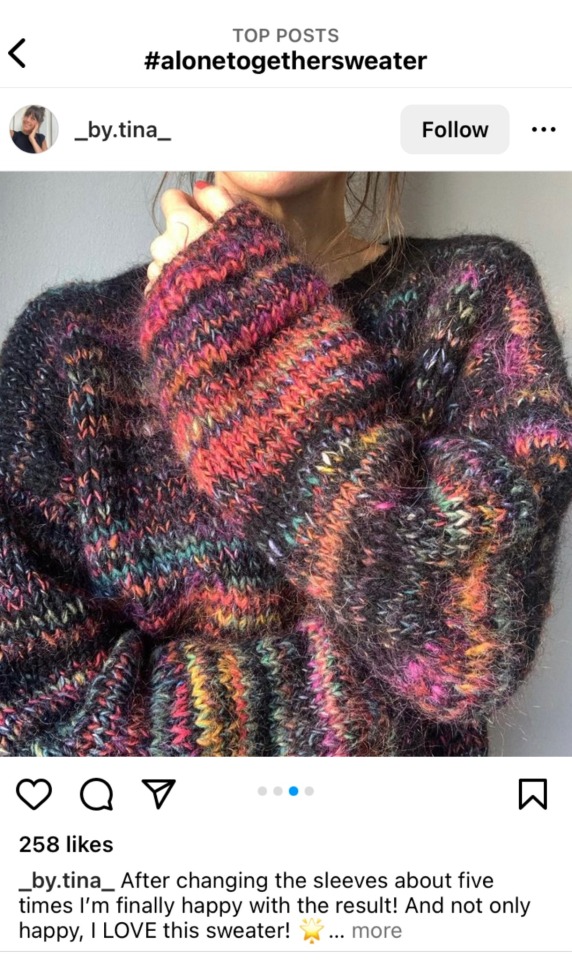
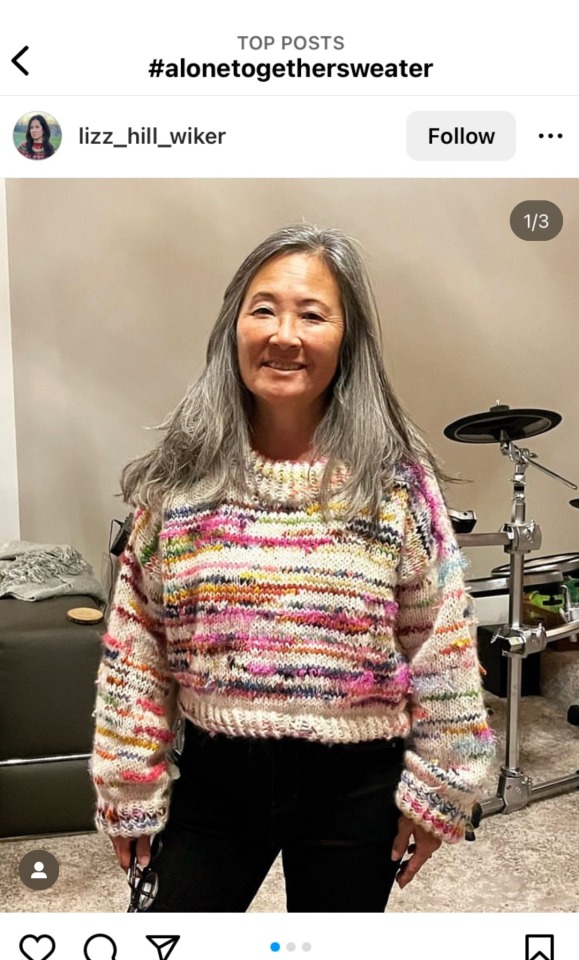
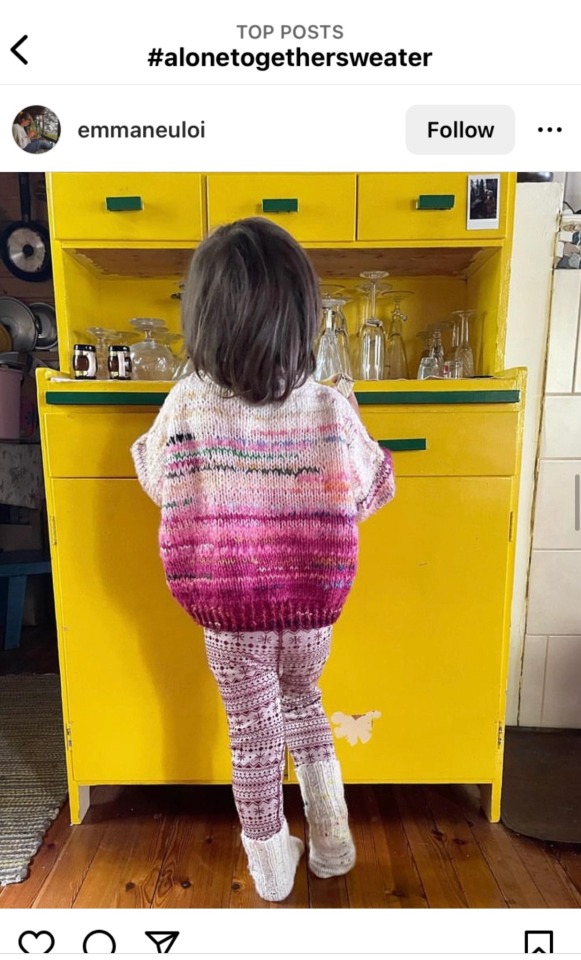
Alone together sweater project
Laerke Bagger
In lockdown, Danish knitwear designer, Laerke Bagger, released a free pattern to make her ‘alone together sweater’. The project was specifically lockdown-friendly, aiming to encourage people to use whatever yarn they had at home, especially scraps! I love how Bagger made the pattern extremely accessible by posting steps on instagram and united a community of knitters, beginners and experienced, through social media.
0 notes
Text

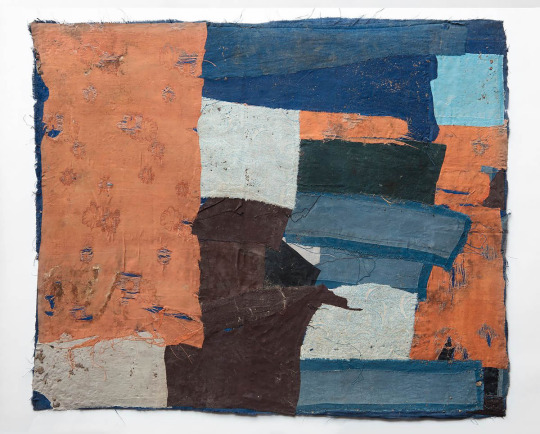

Chinese Ge Ba textiles
Ge Ba textiles are formed from layers of scrap fabric adhered with rice glue. In the past they were used to line the soles of shoes. Today, they have become popular among folk art collectors for their beautiful collage like appearance.
0 notes
Text

Hand made 1930s sock cats
Via Stella Rubin Antiques
I love handmade toys like this. In an age where soft toys are mass manufactured, pieces like this are becoming increasingly uncommon. Each cat appears to be fashioned from scraps, giving them unique and endearing forms. I’d love to know more about their maker(s) and story.
0 notes
Text
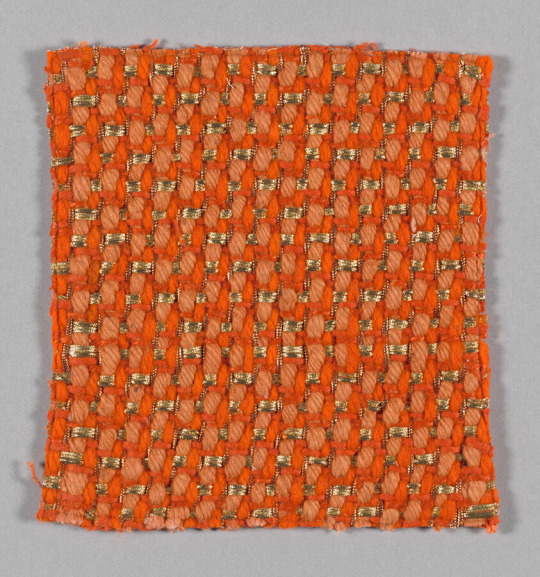
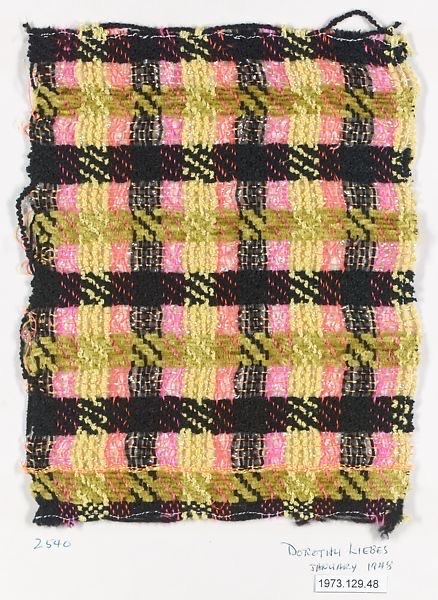

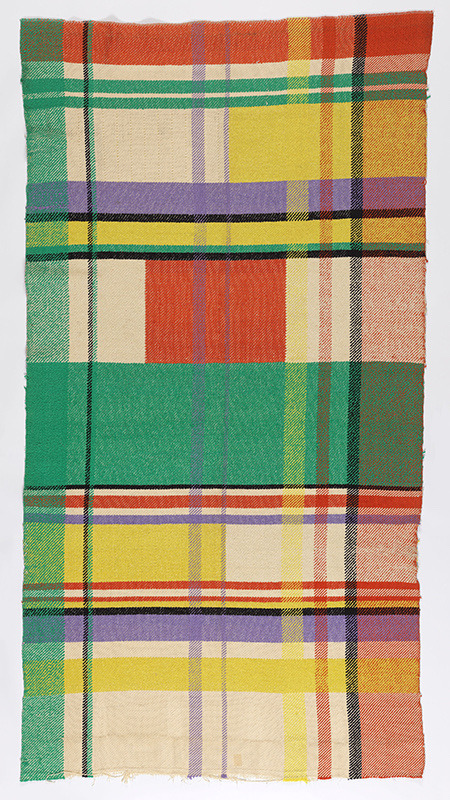
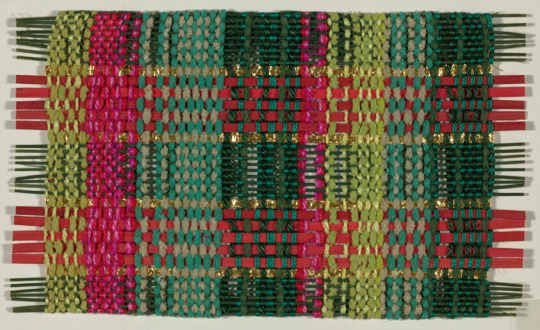
Dorothy Leibes
Various textile samples
Dorothy Leibes was an American textile designer active for much of the 20th century. She was know for designing custom, innovative textiles for architects and interior designers. I love how she broke away from the clean cut aesthetic of the modernist movement by embracing colour and texture. She designed with an open mind, creating work for a variety of clients. And embraced interesting materials including synthetic lurex and chenille yarns, jute, leather strips, feathers and aluminium.
0 notes
Photo
It’s incredible how each crysalise is so unique and intricate, despite this stage only lasting up to 2 weeks. The shapes remind me of temporary structures like tents.
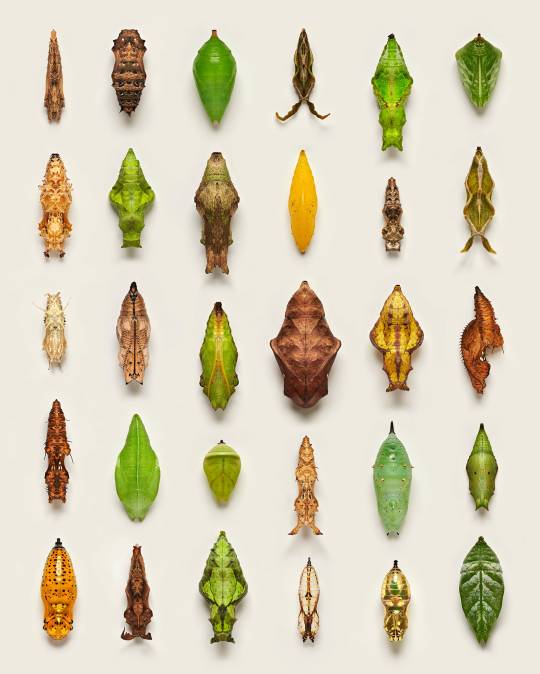

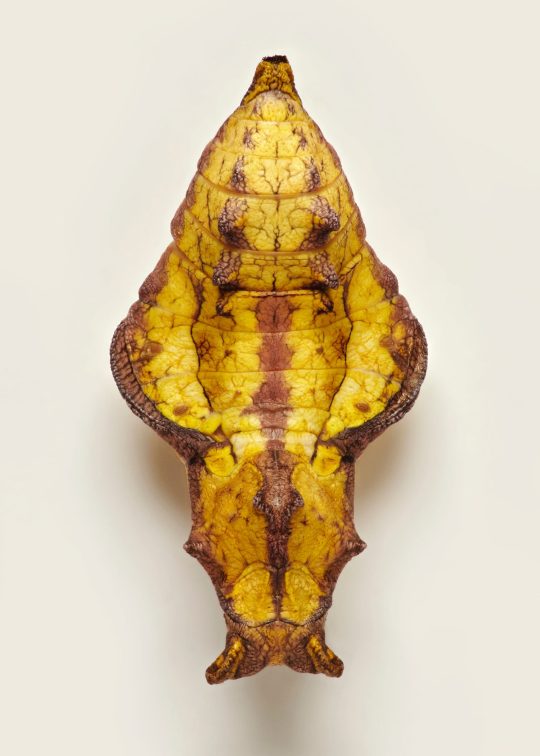
Photographer Levon Biss Illuminates the Strange, Otherworldly Chrysalises of Butterfly Pupae
12K notes
·
View notes
Text
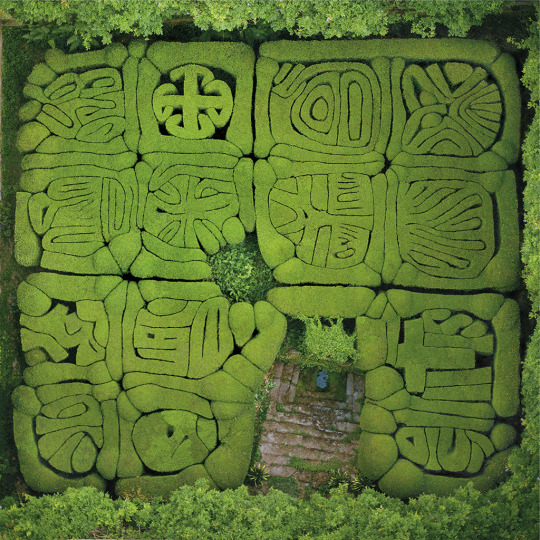
17th century boxwood gardens
San Lorenzo de Trasouto, Spain
‘The cloister houses the most relevant piece of Spanish geometric gardening from the religious standpoint as well as the most valuable jewel of the Pazo. Cut out of box shrub, this work of art stands out for its symbolism and its longevity (four centuries); it is pruned by the gardener twice a year. One can still distinguish a part of allegorical designs, other ones being hidden, maybe forever, in the shrub’s enigmatic composition.’
8 notes
·
View notes
Text

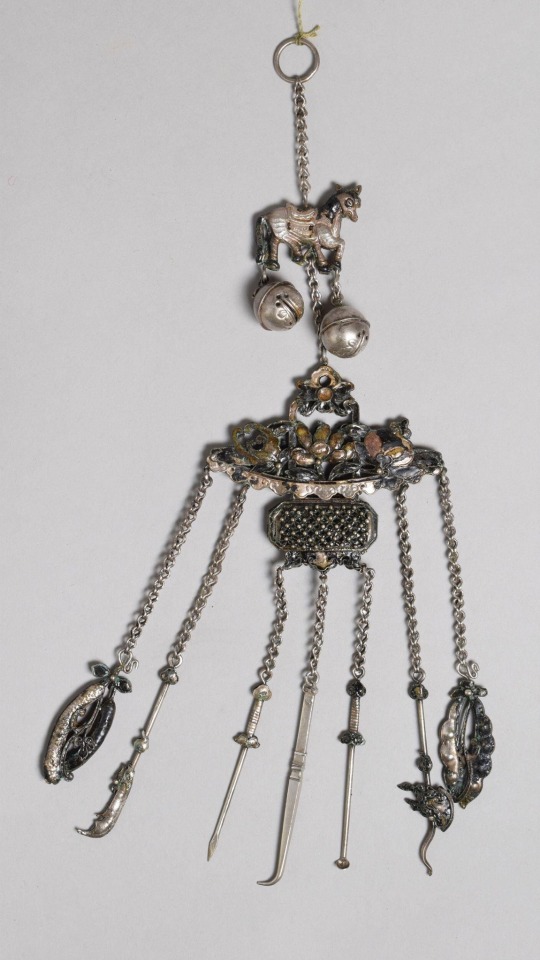
Antique chatelaines
‘Chatelaines were decorative but useful waist hung fashion accessories. The system of clips and chains, attached to the belt, kept small but necessary items such as sissors, keys and money easily accessible for housewives and housekeepers. Before the 1850s pockets were uncommon in women’s garments and chatelaines were a versatile and ornamental alternative. The huge numbers of increasingly large and elaborate chatelaines made in Britain and America was ridiculed in satirical publications like Punch magazine.’
Unlike traditional jewellery, the chatelaine is practical and goes to show how functional objects can be beautiful. It also acted like a sort of uniform, the type of objects indicating to the profession or social class of the wearer.
0 notes
Text

Japanese straw cape
Photo: Hiroshi Hamaya
In the past, raincoats like these were woven from straw. Straw was used for its water repellent properties and also provided insulation. I like how the garment is made from a material that complements its function- as apposed to how modern day waterproof fabrics must be coated.
0 notes
Text
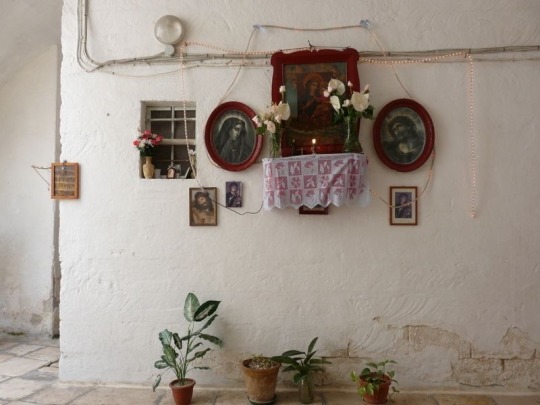
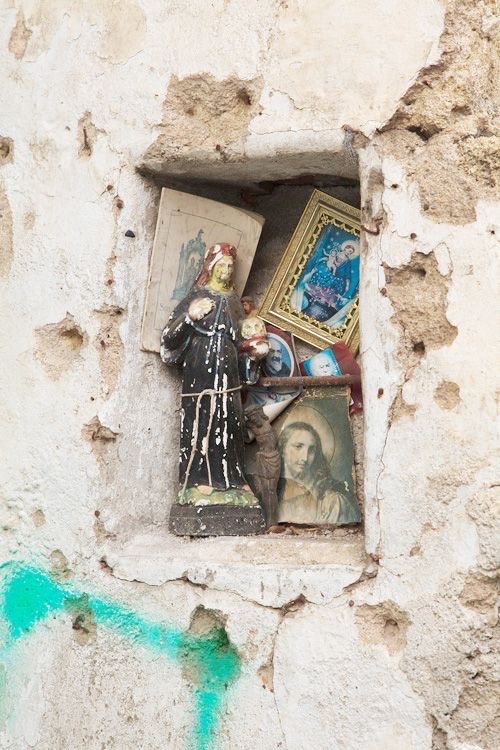
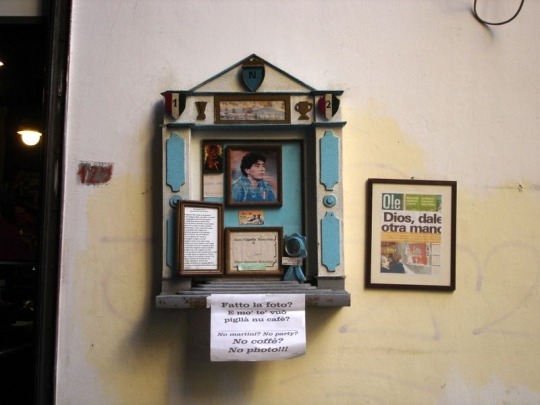


Italian city shrines
Photos: Davide Knap
These tiny shrines show how even in cramped, busy cities people will find creative ways to celebrate what they love and believe in.
0 notes
Text

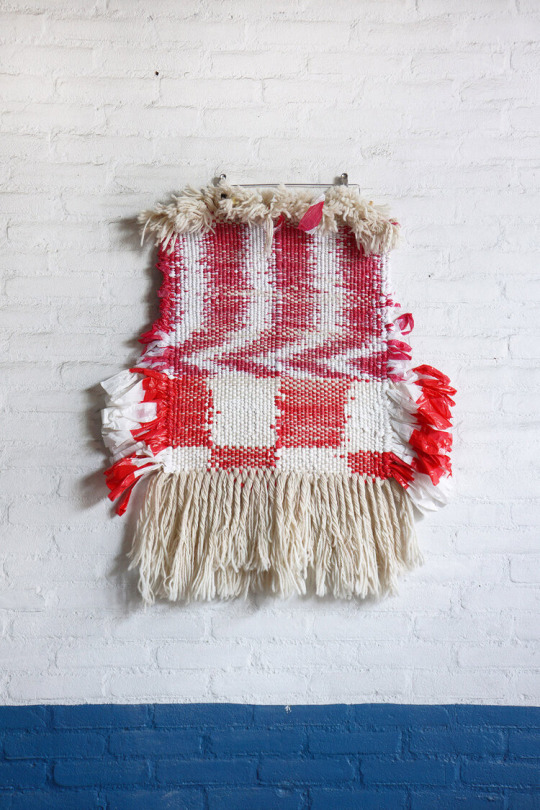

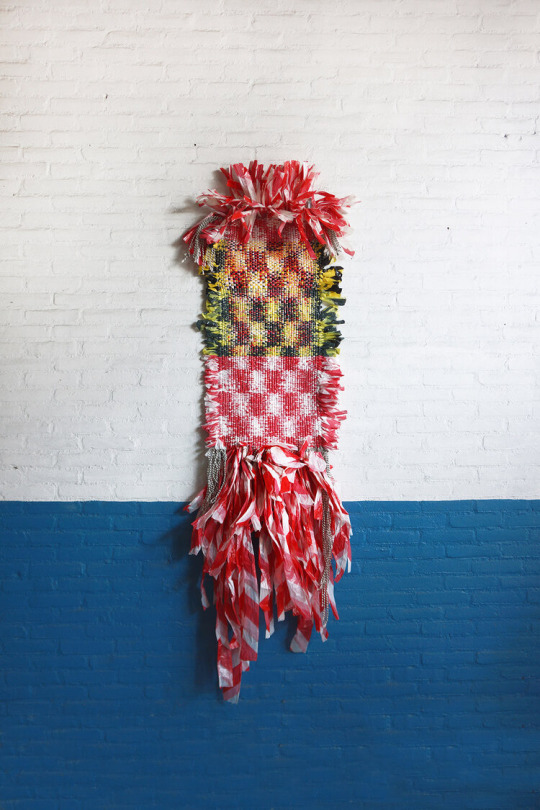
Union of Striped Yarns
Dienke Dekker
‘The Union of the Striped Yarns’ is a project revolving around the meeting points of striped yarns in woven textiles and the patterns emerging in which these stripes meet and find each other. By influencing the basic element of a textile, its yarn, the individual characters of the products are defined. The collaboration of the yarns and the different ways of interweaving them results in complex repetitions and sequences, seemingly random overall effects and intriguing colour-plays. The achieved patterns are not always directly comprehensible, but the loose ends of the textiles unveil some of the mystery.’
I like how the pieces have a distorted, fuzzy effect- a great contrast from the rigid stripes they are made of.
0 notes
Text

Sea glass/ ceramics
I think it’s really beautiful how something man made can integrate itself back into the natural world without detriment. It’s interesting how a commonplace material can become novel after a change in context and time.
0 notes